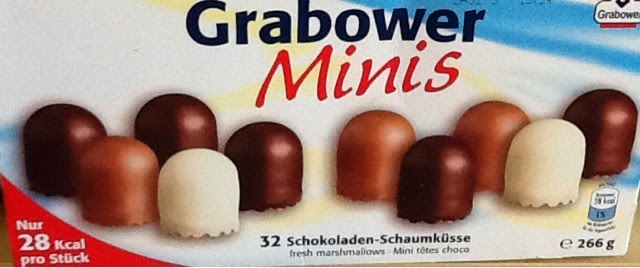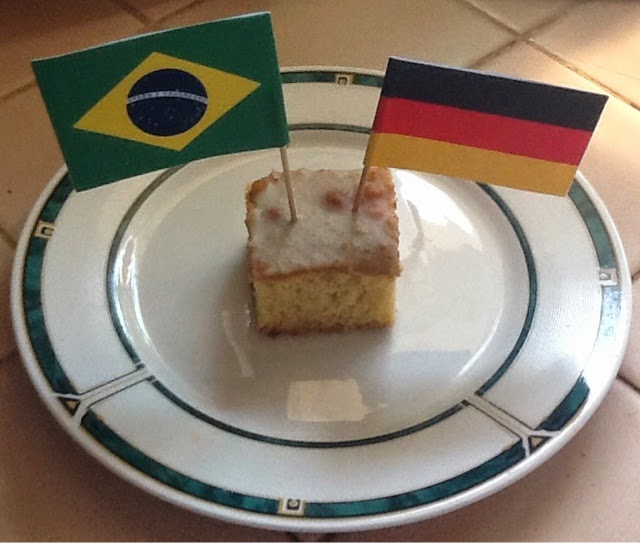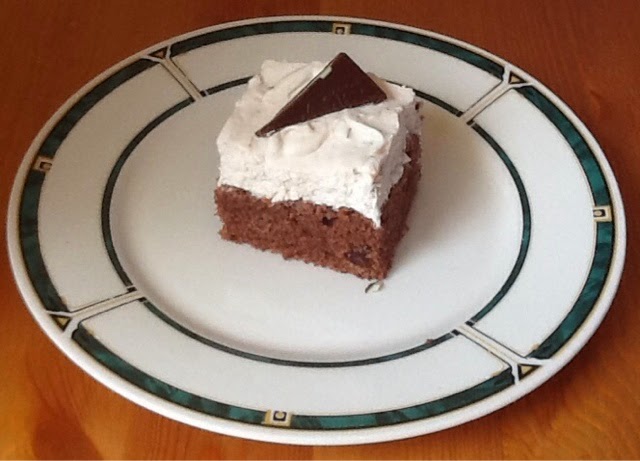This cake is a really nice summer cake. The tartness from the lemons makes it very refreshing. It takes a little more practice, but with a little decorating you can make it look really fancy!
Ingredients:
11x9 inch Pyrex dish (30x40 cm) deep baking dish
Some grease
For the cake batter:
100 g (1 stick) butter or margarine
100 g sugar
1 teaspoon vanilla extract or vanilla sugar
Zest of one lemon or 1/3 teaspoon powdered lemon peel (I use Penzey's)
3 eggs
200 g all-purpose flour
2 leveled teaspoons baking powder
1/2 teaspoon baking soda
200 g (1 container) Greek lemon yoghurt (I use Chobani or Open Nature)
For the topping:
400 g (2 containers) Greek lemon yoghurt (I use Chobani or Open Nature)
50 g powdered sugar
200 g (1/2 pint) whipping cream
1 teaspoon agar-agar or a package gelatin
For the decoration:
1 lemon
50 g semi-sweet chocolate
Optional: 1 package JELL-O pudding and pie filling lemon
Preparation:
1. Preheat oven to 180 degrees Celsius (350 F). Grease Pyrex form or baking dish.
2. Whisk butter or margarine until smooth. Add sugar, vanilla or vanilla sugar, and lemon zest or peel, and whisk until sugar has dissolved (no crunch). Whisk in eggs, one egg at a time for 1/2 minute per egg.
3. Mix flour, baking powder and baking soda in a separate bowl. Add flour mixture to batter and whisk until smooth. Lastly, briefly stir in lemon yoghurt.
4. Pour batter in greased Pyrex dish and bake at 180 degrees Celsius (350 F) for about 20 minutes.
5. Remove cake from oven and let cool in baking dish.
6. For agar-agar: dissolve 1 teaspoon in about 100 ml boiling water. Put the bowl with dissolved agar-agar in a bowl containing boiling water. Boil for about 5 minutes.
For gelatin: Put gelatin in a small stovetop pot. Add 2-3 tablespoons water and let sit for about 5 mintes. Slowly heat gelatin and stir until dissolved.
7. Stir 2 tablespoons of yoghurt into dissolved agar-agar or gelatin, then add the remaining yoghurt and mix. Put yoghurt in refrigerator.
8. In the meantime, beat whipping cream with powdered sugar until stiff peaks are visible (you should be able to put the bowl upside-down, and the cream should stay in the bowl.
9. Gently fold the whipped cream into the yoghurt, the spread mixture evenly on cooled cake. Refrigerate for at least 1 h or better overnight.
10. Peel the lemon and remove all of the white layer. Cut the lemon into thin slices, and put the slices on the cake.
11. Prepare the JELL-O lemon pudding according to the instructions, then pour some of it into a small plastic bag. Cut one edge off, and decorate the cake.
12. Melt some chocolate in the microwave or over boiling water in a heat-resistant bowl. Pour chocolate into a plastic bag, cut one corner off, and sprinkle chocolate over the cake.
Comments:
1. You can use the lemon zest for the batter and the lemon slices for the decoration. Just be gentle when zest ing the lemon to avois squeezing it too much.
2. Each Greek Yoghurt container is 170 g, so I used a little less than the German recipe calls for, but it worked out fine.
3. The baking soda was not in the original recipe. I added it because the batter contains a rather acidic yoghurt. With the extra acidity the baking soda should help the rising better.
4. After previous disasters with yoghurt cakes (I tried to make these cakes without gelatin to make them suitable for vegetarians) I experimented with agar-agar. I think it worked well, but I am not quite sure how much to use. This was a first trial, let me know if you have any experience with agar-agar as a gelatin substitute.







